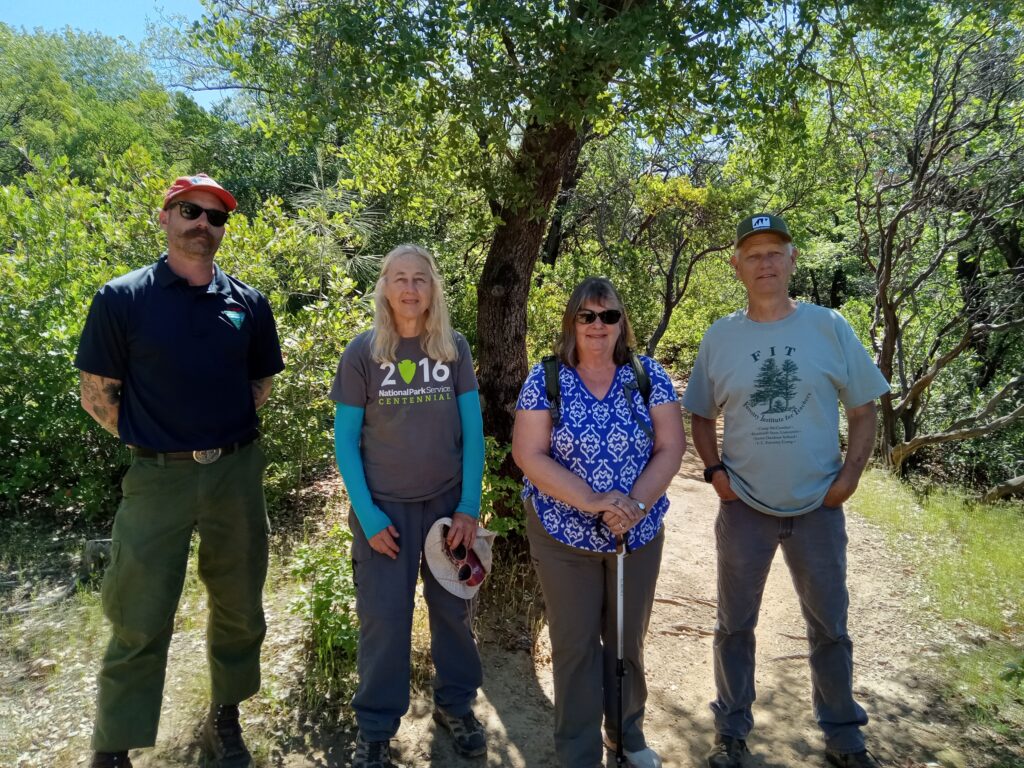
By David Ledger
SEA organized a field trip led by BLM Ecologist Brooke Thompson and BLM Fire Management Officer Garrett Dunn on the Hornbeck Trail north of Redding to talk about the BLM proposed fire treatment planned for the 500 acres in the surrounding area.
This area is gray pine and oak woodland with a considerable understory of chaparral (shrubs). Brooke stated the reason they have to do a vegetative treatment is because 100 years of fire suppression has caused a huge fuel build-up and because of the encroachment of homes in the area. This is in what is called a Wildland Urban Interface (WUI) Poor planning in many jurisdictions has allowed this continued encroachment into wildland areas and creating a heightened fire danger.
Without man in the picture, chaparral will burn every 30 to 100 years and it generally rejuvenates the habitat, allowing more nutrients and water for trees, and open space for grass and flowering plants to grow. The shrubs will come back too, but less dense for many decades as trees take up more of the space and shade out much of the brush. In a severe burn, chaparral will take over until trees grow and overtop it, eventually out-competing the shrubs. Many of the seeds in chaparral, both shrub and herbs, can remain dormant in the soil waiting for a fire to germinate and spring to life. In this sense, the fire is good except when houses are nearby.
Because it is so close to the urban area, fire treatment is not safe at this time due to the thick understory. This will be a primarily mechanical treatment of cutting shrubs and trees with burning limited to burn piles. Garrett stated that trees would be thinned to 30 feet apart as would clumps of shrubs. The larger logs over 10 to 12 inches would be left on the ground for habitat and slow decay of nutrients. The smaller trees and shrubs would be masticated and, in some cases, burned in place. He showed us a section that had been treated 10 years ago and while shrubs had grown back, they were still not as thick, so while needing thinning, the fire hazard was much lower.
While many of us do not like to see vegetation removed, the methods they are using will in some ways mimic a low-intensity fire and still leave habitat for wildlife. There will be some burning of piles on site and the heat from the fire and the chemicals in the smoke can break the protective seed coat of dormant flowers providing a wildflower bonanza in the spring. Visiting areas of previous burns of understory shrubs almost always provides a bonanza of wildflowers in spring.